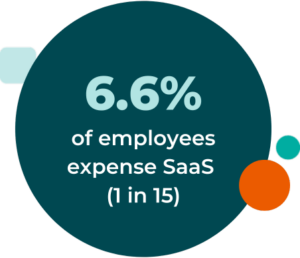12/07/2021
Table of Contents
Do you have a favorite SaaS tool that you bring with you no matter which company you’re working for? Congratulations: you’re practicing tool autonomy.
Today’s knowledge workers are demanding more of their employers—and expect their business environments to reflect their personal worlds. More specifically, they want easy access to the best tools and technology to ensure they can be productive and connected in their roles.
This applies to both physical devices and software.
In one recent survey, 9 out of 10 employees said they’d take a pay cut to be able to use the device that they want and 7 out of 10 said they would be more likely to join a company if they were able to choose their own technology.
At the same time, Gartner predicts that, in just two years, 40% of workers will orchestrate their business application experience and capabilities like they do “their music streaming experience.” These numbers are likely to only increase with time as Gen Z and Millennial knowledge workers become an increasingly larger portion of the workforce. (Forrester found that two-thirds of Gen Z and Millennial workers say autonomy in choosing the apps, services and devices they will use for work is a top priority.)
Okay, okay—enough with the stats. We just wanted to spell out what this means for you: the reality is, if you don’t provide tool autonomy, your employees will either find another way to get access to these tools or leave.
Now the question is: what can you do about it?
What Is Tool Autonomy—And Why Does It Matter?
Let’s get back to basics: besides security, compliance and cost savings, an IT department’s role is to improve the employee experience. Part of that charter is enabling employees to choose their own technology—especially their software tools.
That’s where tool autonomy comes in.
In short, tool autonomy is the ability to choose the tools you use to complete your work.
Off the heels of the era of the “Great Resignation,” more power than ever sits with employees (instead of employers). That’s why we’re seeing tool autonomy become an increasingly critical part of the employee experience.
Employees want to have choice in what tools – hardware, software and services – that they use.
 “Applications used to define our jobs,” said Daryl Plummer, distinguished vice president and Gartner Fellow. “Nowadays, we are seeing organizations designing application experiences around the employee.” Then Plummer gets specific: “For example, mobile and cloud technologies are freeing many workers from coming into an office and instead supporting a ‘work anywhere’ environment, outpacing traditional application business models. Similar to how humans customize their streaming experience, they can increasingly customize and engage with new application experiences.”
“Applications used to define our jobs,” said Daryl Plummer, distinguished vice president and Gartner Fellow. “Nowadays, we are seeing organizations designing application experiences around the employee.” Then Plummer gets specific: “For example, mobile and cloud technologies are freeing many workers from coming into an office and instead supporting a ‘work anywhere’ environment, outpacing traditional application business models. Similar to how humans customize their streaming experience, they can increasingly customize and engage with new application experiences.”
Of course, it’s not as black and white as as an either/or between free reign for employees and tight restrictions from IT. According to Zylo data, on average, nearly 1 in 15 employees (6.6%) expenses SaaS applications for business use. In the same vein, IT controls only 26% of SaaS spend. That means employees are getting tool autonomy whether IT likes it or not, and IT needs to put some restrictions in place whether employees like it or not.

It’s a fine line to walk.
Providing employees with better access to business applications and making them aware of what’s already available can increase employee effectiveness, productivity and satisfaction.
How Can You Make Tool Autonomy a Reality in Your Organization?
One of the most frustrating conundrums that IT teams face is fielding constant requests for new tools even while the organization has many choices available already. Yes, you want to give employees choice—but how do you keep tabs on IT costs and existing applications?
Guesswork and spreadsheets won’t cut it. But SaaS Management Platforms can help IT teams manage SaaS sprawl and still improve the employee experience. Here’s how:
- Building a single system of record. The power of having a single system of record for all your SaaS applications is that you have full visibility of what’s being used throughout the organization. Management can ensure their teams are effective, employees can find what they need, and IT can manage SaaS spend – all in one powerful platform.
- Empowering leaders to meet employee needs. Uncover what apps employees or teams are purchasing on their own (shadow IT), consolidate multiple instances into cost-effective contracts, and officially offer them in your App Catalog.
- Reducing the temptation to expand Shadow IT. Use an enterprise application catalog to surface approved applications so employees can see what’s available and search for their needs by category. Zylo’s App Catalog enables employees to see what tools that organization has access to – enabling them to “go shopping” for what they need from a list of already approved tools.
So, yes. Give your employees tool autonomy. But make sure you have the right systems for tracking, surfacing and optimizing your tools first. That’s the way forward to tool autonomy.
Evolving Your SaaS Governance Framework for the Digital Workplace
Learn More
